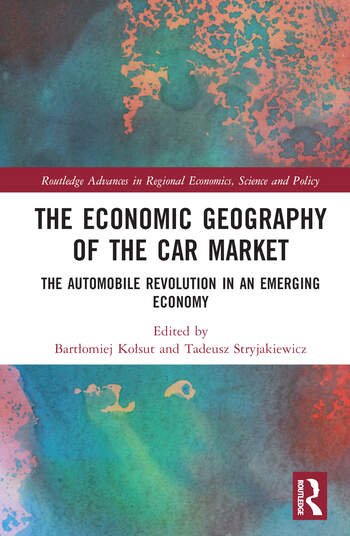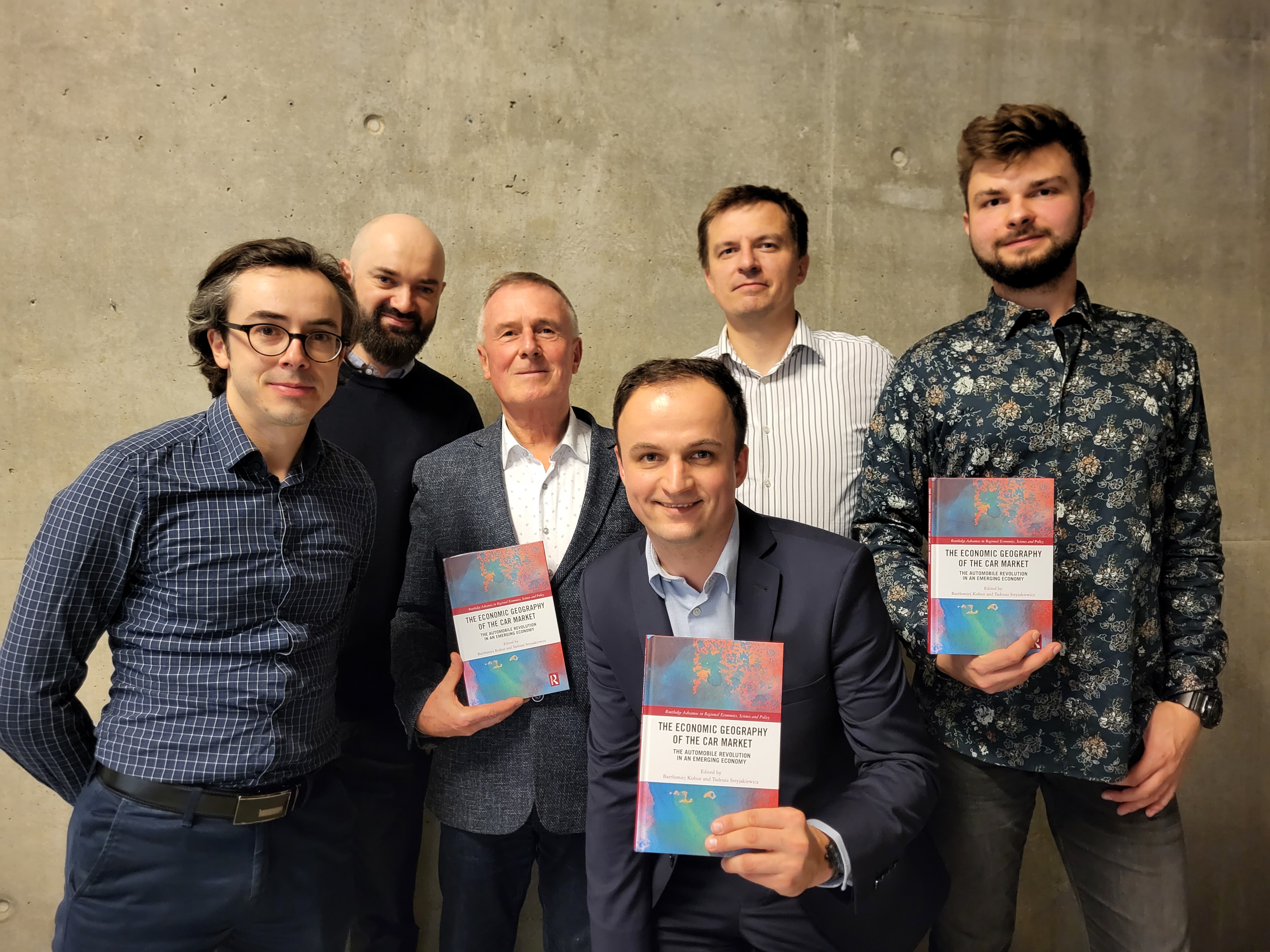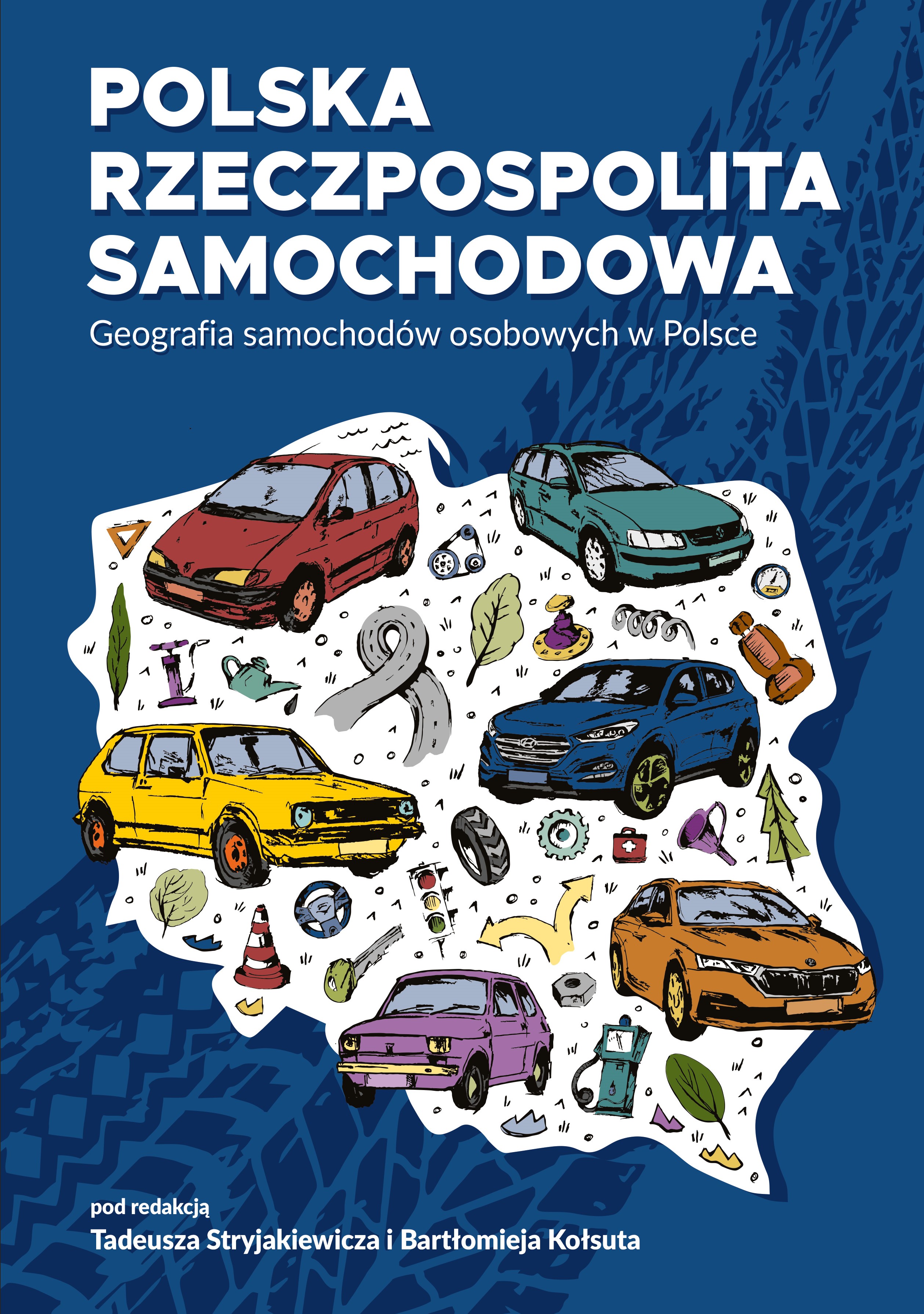Spatial dimension of the car market (r)evolution in Poland
The project ‘Spatial dimension of car market (r)evolution in Poland’, financed by the National Science Centre, is the first research project addressing broadly the issue of changes taking place in our country in the passenger car market after the political and economic transformations of 1989. The novelty of this project finds expression in adopting the geographical perspective to analyse these changes with reference to two spatial scales:
- Poland against other countries;
- regional differences in the internal market.
The project seeks answers to five cognitive questions, relying, on the one hand, on a solid theoretical basis (embedded in the international literature) and, on the other, on empirical research which embraced, e.g., the collection of a database on more than 35 million vehicles (eight billion information units) and the social research carried out on a cohort of 4,000 respondents (drivers) in different types of areas. The project results have been published in numerous scientific articles, and in particular in the monograph “The Economic Geography of the Car Market. The Automobile Revolution in an Emerging Economy” (Routledge – Taylor & Francis Group).
The importance of the project follows from its contribution to the development of the scientific discipline ‘social and economic geography and spatial management’ as well as from its potential impact on planning and decision-making practice. The following research conclusions merit special attention:
- Poland is a unique ‘laboratory of the car revolution’ at the turn of the 21st century.
- Poland’s accession to the European Union in 2004 was a turning point in the process of car market transformation.
- During the post-socialist transformation, the most important ‘driver’ of car ownership growth was the import of second-hand cars, of which Poland became a leader on an international scale.
- Geography of the automotive revolution is linked to such spatio-economic phenomena and processes as: urban sprawl, marginalisation of rural areas, ‘centre-periphery’ patterns, local entrepreneurial resources, and numerous institutional determinants (e.g. tax, customs and transport policies).
The research results also indicate that the actual number of passenger cars on Polish roads is lower compared to the data obtained from Statistics Poland. This is an important conclusion (not assumed earlier in the project) which has changed previous interpretations of the car ownership rate in Poland (including its international context), being also of great significance for planning and decision-making.
Project team
- Prof. dr hab. Tadeusz Stryjakiewicz (project leader)
- Dr Bartłomiej Kołsut (team coordinator)
- Dr inż. Wojciech Dyba
- Dr Wojciech Kisiała (UE in Poznan)
- Dr hab. Robert Kudłak, prof. UAM
- Inż. Bartosz Doszczeczko
- Dr Jędrzej Gadziński †
- Dr inż. Bartosz Wojtyra †
The most important publications related to the project




Contact
Tadeusz Stryjakiewicz
tadek@amu.edu.pl
tel. 728480207
Bartłomiej Kołsut
bartkol@amu.edu.pl
tel. 691224550
More information about the project and its most important publications can be found on the following websites: